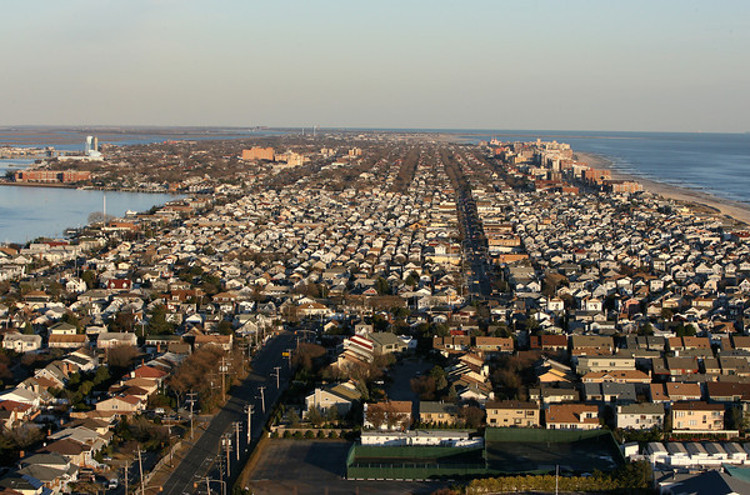The recently announced creation of a regional planning alliance between the Town of Islip, Town of Brookhaven and Suffolk County could mark a new era of cohesion on Long Island…or not.
Regional planning entails critical analysis of specific issues. It’s not supposed to become a vehicle to take development on a fast track. Neither is it just about nurturing economic growth, the supposed darling of Long Island’s policymakers these days. No, its purpose is balance all the competing social, economic and environmental forces in a manner that anticipates and accommodates the ever-changing needs of a geographic area over the next 10, 20 to 30 years.
The joint release issued on April 29 highlights the skewed definition of the concept of regional planning being used by all involved: The word “development” was cited in seven instances throughout, while “economic” appeared five times, and lastly, “growth” appeared three times. “Environment” appeared only twice, once in reference to the supposed “brain drain,” and the other when Town of Islip Supervisor Angie Carpenter stated, “Having been involved in business, I understand how imperative it is to work together to create an environment that fosters economic growth and development, and has all the players at the table working together. I am certain this will be a model going forward with other significant projects.”
It’s that last part of Carpenter’s quote that is troubling.
Other significant projects include Heartland Town Square, Syosset Park, Wyandanch Rising and an array of other proposals scattered throughout Long Island that are slated for approval, all with far-reaching regional significance.
This particular regional alliance focuses on TRITEC Real Estate’s Ronkonkoma Hub, which is slated to include 1,450 residential units, 360,000 square feet of commercial usage and 195,000 of retail space. On its own, the project is uniquely positioned to be a true transportation hub, linking automobiles, trains and planes. Philosophically, the project has roots back in the 1980s, when the Long Island Rail Road’s mainline was electrified. The project didn’t gain much traction for various reasons, but, all in all, given the unique opportunity being presented, TRITEC’s hub isn’t a bad idea.
Nor is the goal of a regional alliance. The municipalities and Suffolk should partner, but given the County’s obsession with throwing large-scale development at our regional woes and steadfast dedication to Connect Long Island, the County’s questionable proposal that looks to link these new projects together via bus rapid transit routes, the compact is setting the stage for more “regional alliances” that very well may just streamline the approval process. Maybe that’s the real goal here. And that would be a mistake.
While stakeholder groups like Vision Long Island argue routinely against a regional approach to handling the Island’s future, the projects on the table need true regional analysis that transcends the limitations of the much-touted hyper-local focus. In fact, the failures of extreme hyper-localism have warranted a renewed regional zeal – but we must not let the pendulum swing too far in the other direction. By enabling townships to control sole approval power over large projects like Heartland Town Square, with its thousands of units and million-plus square footage of commercial space, and to a lesser extent the proposed revamping of the Nassau Coliseum site, we’ve highlighted time and time again the shortcomings of local control, especially when the impacts are far reaching beyond their immediate geographic scope.
Suffolk’s legacy of regional planning is so strong that its policies were often emulated nationwide. To this day, the county’s grasp of planning is significantly stronger than it ever was in politically broken Nassau County. Yet, despite this strong background, Suffolk cannot get out of its own way when it comes to sound regional planning. By merging the once acclaimed department of planning under the umbrella of a new “Department of Economic Development and Planning,” Suffolk is betraying its long list of accomplishments that include innovative open space protection programs, farmland preservation and aquifer maintenance.
To the policymakers in Islip, Brookhaven and Suffolk County are genuine about assessing the regional impacts of these projects, then make a sincere effort. Be critical in your joint analysis, and actually plan! Do not use the guise of these “regional alliances” to make approval of long-lasting, sometimes questionable development proposals any easier.
Residents will never benefit from “intellectual dishonesty,” an on-point term overheard being used by a local policymaker. Long Islanders deserve true regional planning, not a charade where the answers are already determined—and the only ones who benefit are the developers, not the people who actually reside here.
Rich Murdocco writes on Long Island’s land use and real estate development issues. He received his Master’s in Public Policy at Stony Brook University, where he studied regional planning under Dr. Lee Koppelman, Long Island’s veteran master planner. Murdocco will be contributing regularly to the Long Island Press. More of his views can be found on www.TheFoggiestIdea.org or follow him on Twitter @TheFoggiestIdea.


























